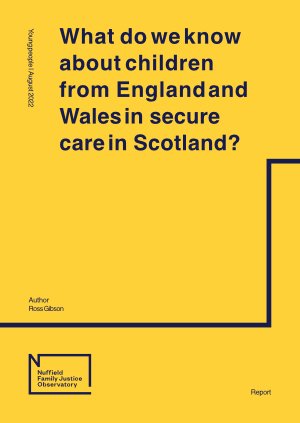By HM Inspectorate of Probation; Bob Smith, et al
Children who are remanded in youth detention are some of the most vulnerable in our communities. Numerically they are a small group, typically between 200 and 250 at any one time, and around 1,200 in a year. Many have experienced neglect, abuse and trauma. They have often missed out on schooling and diagnosis of learning needs and disabilities. Some have been victims of exploitation. For many of them, there have been missed opportunities to intervene earlier in their lives. The offences which the children in our sample group were suspected of committing were mostly serious, some involving life-changing injuries and loss of life. However, not all children in our sample needed to be remanded in custody. A quarter were released on bail before being sentenced, and inspectors judged that more of them could have been safely managed in the community. Children were bailed, often within a week of their initial remand, not because their risk had reduced but because a suitable bail programme with appropriate accommodation had become available which could safely manage those risks. Children’s services and youth justice services should work together more effectively to provide information and community remand options to the courts earlier. In this report, we set out a range of ways to achieve this, but it mostly involves good communication and clarity of responsibilities between professionals, who take a proactive approach. Children who are remanded comprise around 40 per cent of all children in custody. There is a gulf between the quality of care given in the three types of secure facilities used for children who are remanded in custody: secure children’s homes, secure training centres and young offender institutions. The quality of care is good in the secure children’s homes but less so in the others, where we identified many weaknesses in the management of remanded children. Children acquire child in care status as a result of their secure remand, and that is applied in widely different ways. The assistance they should receive is not consistently good enough, as a result of ineffective care planning and because their social workers lack knowledge of both the criminal justice system and secure estate processes. As a result, children do not always have timely access to basics such as pocket money to pay for phone calls (including to their social workers) and essential items. Families of sentenced children receive help with travel costs for visits from the secure estate, but families of remanded children rely on assistance from youth justice and children’s services, which is not always forthcoming. Social workers do not sufficiently implement the care planning regulations in the context of children’s circumstances when they are in the secure estate. As a result, the benefits of ‘in-care status’ are not realised to improve children’s circumstances. National standards and guidance are needed in this area. When the remand ends, some children return to their communities, and sometimes that return is unexpected. They do not always receive the support they need, and if they have reached 18 their case may need to transfer to the Probation Service. That does not always happen effectively. Underlying these shortcomings in remand are racial and ethnic disparities at many of the key decision points in the system, which result in black and mixed heritage children being over-represented in custody. This needs urgent attention. Our recommendations are designed to improve the quality of services across the whole remand process, to ensure that only those children who need to be detained are in custody and that those children receive a high-quality service that keeps the community safe but meets their needs, both when they are in custody and as they prepare to return to their communities.
Manchester, UK: The Inspectorate, 2023. 50p.














